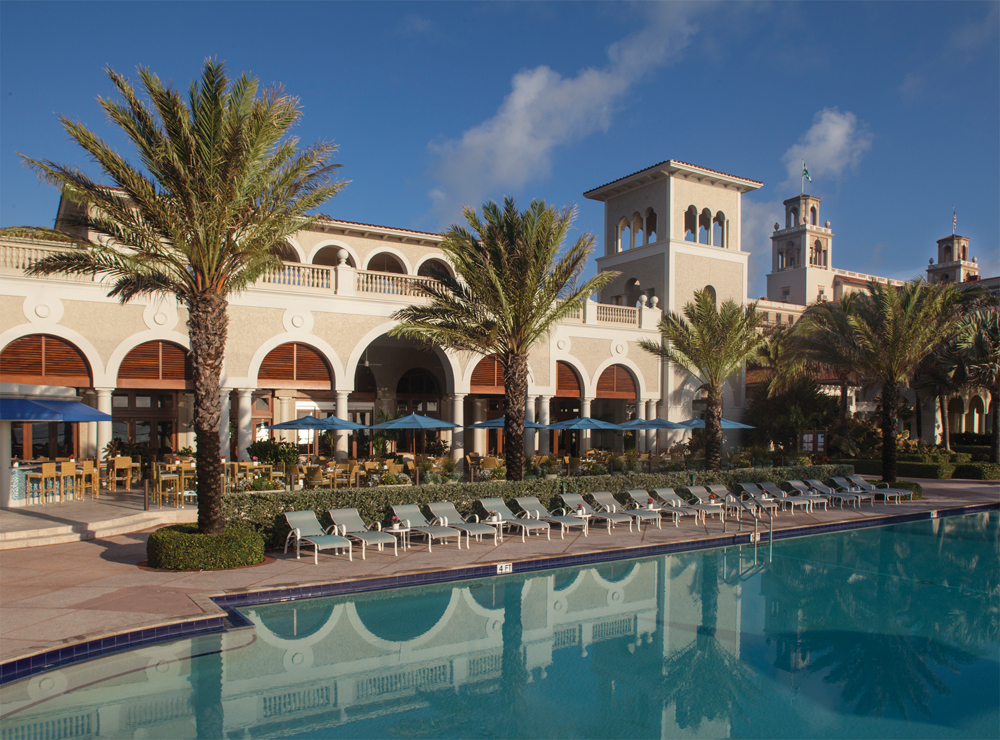Now rising in the Big Apple, the 70-story Central Park Marriott will be the tallest hotel in the Western Hemisphere when completed by CNY Group. The $200 million project, with structural engineering by WSP, reflects the generally upbeat mood in the hospitality market.
“Globally, hotel operating fundamentals are poised to remain strong in 2013,” says Mark Wynne-Smith, Global CEO of Jones Lang LaSalle’s Hotels and Hospitality Group. Despite some economic stressors, JLL believes supply and demand, availability of investment capital (especially from private equity funds), and REIT stock prices all point to “an attractive environment” for hotel business worldwide.
TOP HOTEL ARCHITECTURE FIRMS
2012 Hospitality Revenue ($)1 Gensler $69,090,0002 WATG / Wimberly Interiors $54,713,0003 HKS $32,000,0004 Leo A Daly $19,999,6215 RTKL Associates $19,730,0006 Hnedak Bobo Group $17,425,0007 Perkins Eastman $11,600,0008 Kohn Pedersen Fox Associates $11,251,8009 Cuningham Group Architecture $10,019,86510 HOK $10,011,000
TOP HOTEL ENGINEERING FIRMS
2012 Hospitality Revenue ($)1 AECOM Technology Corp. $100,190,0002 Parsons Brinckerhoff $28,900,0003 Buro Happold Consulting Engineers $16,165,0004 Rolf Jensen & Associates $7,600,0005 Thornton Tomasetti $7,218,7316 KPFF Consulting Engineers $6,000,0007 Arup $5,527,3718 Michael Baker Jr. $4,340,0009 Wiss, Janney, Elstner Associates $2,880,00010 WSP USA $2,696,642
TOP HOTEL CONSTRUCTION FIRMS
2012 Hospitality Revenue ($)1 Manhattan Construction $290,769,0002 Structure Tone $250,908,0003 Lend Lease $234,975,0004 Swinerton Builders $227,431,9505 Mortenson Construction $209,550,0006 Tutor Perini Corporation $209,216,1267 Brasfield & Gorrie $163,774,5588 Flintco $155,600,0009 Messer Construction $147,695,12810 Yates Cos., The $144,700,000
San Francisco, Los Angeles, Houston, Chicago, New York City, Hawaii, and Washington, D.C., are pinpointed as strong markets in the Americas (http://bit.ly/JLLHotels).
Adaptive reuse for hospitality is producing some particularly interesting remakes of historic properties. The strategy dovetails with travelers’ growing taste for local authenticity—a particular interest of Millennials, according to Tom Ito, Principal and leader for Gensler’s global hospitality practice. “For this generation, avoiding the norm is all about being true to yourself,” says Ito. “As this consumer group grows in spending power, hoteliers will need to provide personalized experiences that reflect the spirit of this demographic.”
Related Stories
Cultural Facilities | Aug 21, 2024
Baltimore’s National Aquarium opens 10,000-sf floating wetland that mimics the harbor’s original tidal marsh habitat
The National Aquarium in Baltimore has opened the National Aquarium Harbor Wetland, a 10,000-sf floating wetland that mimics the Inner Harbor’s original Chesapeake Bay tidal marsh habitat. Located between Piers 3 and 4 on Baltimore’s Inner Harbor, the $14 million project features more than 32,000 native shrubs and marsh grasses.
Mixed-Use | Aug 21, 2024
Adaptive reuse of a Sears store becomes luxury mixed-use housing
6 Corners Lofts at 4714 W Irving Park Road, Chicago, Ill., opened in March of 2024 as a 394,000-sf adaptive reuse project born out of a former Sears store.
Building Materials | Aug 19, 2024
Federal 'buy clean' construction materials label program unveiled
The U.S. Environmental Protection Agency announced a plan for implementing a new label program to boost American production of more climate-friendly construction materials and products. The label program will prioritize steel, glass, asphalt and concrete.
Museums | Aug 19, 2024
The Tampa Museum of Art will soon undergo a $110 million expansion
In Tampa, Fla., the Tampa Museum of Art will soon undergo a 77,904-sf Centennial Expansion project. The museum plans to reach its $110 million fundraising goal by late 2024 or early 2025 and then break ground. Designed by Weiss/Manfredi, and with construction manager The Beck Group, the expansion will redefine the museum’s surrounding site.
AEC Tech | Aug 19, 2024
Harnessing AI to revolutionize architectural design and creativity
Architects are wondering if AI will replace us. For Vessel, the gains offset the fear. We believe there is wisdom in the unattributed quote, “You won’t lose your job to AI. You will lose your job to someone using AI.”
Reconstruction & Renovation | Aug 19, 2024
Movement to protect historic buildings raises sharp criticism
While the movement to preserve historic buildings has widespread support, it also has some sharp critics with well-funded opposition groups springing up in recent years. Some opponents are linked to the Stand Together Foundation, founded and bankrolled by the Koch family’s conservative philanthropic organization, according to a column in Governing magazine.
Government Buildings | Aug 19, 2024
GSA posts new RFI for enabling energy efficiency, decarbonization in commercial buildings
The U.S. General Services Administration (GSA), in collaboration with the U.S. Department of Energy, recently released a new Request For Information (RFI) focused on enabling energy efficiency and decarbonization in commercial buildings. GSA wants to test innovative technologies through GSA’s Center for Emerging Building Technologies.
MFPRO+ New Projects | Aug 16, 2024
At 60 stories, the Paramount multifamily development will stand as Nashville’s tallest high rise
When complete, the 60-story Paramount building, at 750 feet high, will be the tallest high rise tower in Nashville, Tenn., surpassing the city’s current record holder, the 617-foot AT&T Building. The $390 million Paramount project recently launched condo sales after securing more than $230 million in construction financing.
Urban Planning | Aug 15, 2024
New York City begins first large-scale porous pavement installation
New York City is installing its first large-scale porous pavement installation along seven miles of roadway in Brooklyn. The project will keep 35 million gallons of stormwater out of the combined sewer system each year, according to a news release.
Urban Planning | Aug 15, 2024
The magic of L.A.’s Melrose Mile
Great streets are generally not initially curated or willed into being. Rather, they emerge organically from unintentional synergies of commercial, business, cultural and economic drivers. L.A.’s Melrose Avenue is a prime example.

















